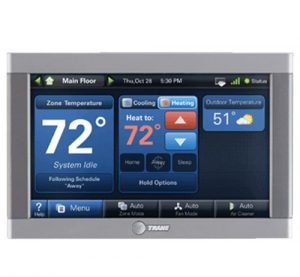The CO (carbon monoxide) detector is something that all homes require in order to keep them safe from this dangerous and odorless gas. While it’s common knowledge to have properly working CO detectors in the home, there are some other facts about these devices that you may not know. Not all carbon monoxide detectors are the same… or as effective.
As you probably know, carbon monoxide is a colorless and odorless gas that can be extremely dangerous through high levels of exposure. These types of levels are typically a result of improper ventilation from home heating sources or garages. Most homes properly expel this gas, but under certain circumstances this gas can build up and result in serious illness or even death from CO poisoning. According to the Center for Disease Control, over 600 Americans die due to accidental acute carbon monoxide poisoning each year, with more than 20,000 people getting sick from this dangerous gas.
Many homeowners think having any standard CO detector is enough to keep their home safe. However, the standards set for bottom line detectors are extremely low. For example, many of these monitors have standards designed to only protect a healthy young adult, with the definition of “young adult” said to include only a healthy individual between the ages of 18 and 22. Seems a little shocking, doesn’t it? Essentially, this means lower levels of carbon monoxide in your homes air will not set off visual or audible warnings, which could pose dangerous threats to the health of those not deemed “healthy young individuals,” including young children or older adults.
Fortunately, there are low level carbon monoxide detectors on the market today that detect even the smallest amounts of this potentially deadly gas. These higher quality detectors also take samples of the air much more frequently—some as many as once every ten seconds. These types of monitors alert a home’s inhabitants well before the levels of CO become harmful, so they can get out of the house immediately and call professional help to take care of the problem. That’s much more reliable safety.
Regardless of the model or quality of CO detector you’re using in your home, it’s essential to make sure it is in proper working order and replaced regularly. It’s best to have your CO detector replaced every 2 – 5 years (depending on the quality of the detector). Low-level CO detectors typically have a lifespan much longer than standard models. BelRed offers these high quality, low-level carbon monoxide detectors because we know how great their benefits can be. Contact us today if you’re interested in having them installed in your home.







